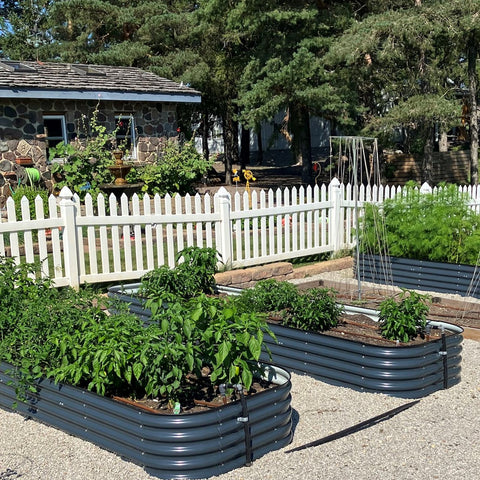Planting Grass Seeds On Raised Garden Beds In Spring
Spring is a good season for planting grass seeds on raised garden beds. In this season, with ample sunlight and suitable temperature, it is an ideal period for grass seed growth and germination.
Planting grass on a garden bed has many benefits, and the following are some of them:
1.Beautify the environment: Lawns can enhance the beauty and cleanliness of the garden, adding a natural green atmosphere to the garden. At the same time, lawns can also absorb noise and reduce urban environmental pollution.
2.Increase oxygen content: Lawns can absorb carbon dioxide and release oxygen, increase the oxygen content in the garden, and improve air quality. At the same time, lawns can also reduce environmental temperature through evaporation, making the garden cooler.
3.Preventing soil erosion: Grass roots can firmly lock in the soil to prevent soil erosion. Especially in gardens with rainy seasons or sloping terrain, planting lawns can effectively prevent soil erosion.
4.Improving soil quality: Grass roots can increase soil aeration, promote the growth of soil microorganisms, and thus improve soil quality. At the same time, lawns can also absorb and filter harmful substances in water, purifying water quality.
5.Provide an ecological environment: Lawns can provide an ecological environment for various insects and small animals, contributing to the biodiversity in the garden.
How to plant grass seeds on a garden bed?
Step 1: Prepare the garden bed
Before planting grass seeds, it is necessary to prepare a garden bed. Remove weeds and other unnecessary plants, loosen the soil, and add organic fertilizers. If the soil quality is not good, you can consider adding some soil amendments.
Step 2: Select grass seeds
When choosing grass seeds, it is necessary to consider the purpose and geographical location of the garden. If it is used for lawns, choose grass seeds with good wear resistance and disease resistance. If planting in a dark area, it is necessary to choose grass seeds that are suitable for growing in low light environments.
Step 3: Spread grass seeds
Before sowing grass seeds, it is necessary to mix them with sand or fine soil to better spread them on the garden bed. Spread the grass seeds evenly on the soil surface and gently compact them so that they can come into contact with the soil.
Step 4: Keep moist
Grass seeds need to be kept moist to germinate and grow, especially in the first few days and weeks. After sowing grass seeds, it is necessary to water them every day to ensure that the soil surface is moist. If the weather is hot and dry, it is necessary to increase the frequency of watering.
Step 5: Trim the lawn
After the lawn begins to grow, it needs to be regularly pruned. Each pruning should not exceed one-third of the height of the grass. Regular pruning can promote the healthy growth of lawns and make them look cleaner.
In short, spring is the ideal time to plant grass seeds on raised garden beds. By preparing a garden bed, selecting appropriate grass seeds, sowing grass seeds, maintaining moisture, and regularly pruning the lawn, you can easily create a beautiful lawn or garden.


